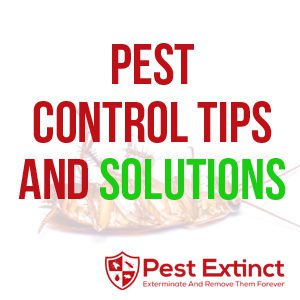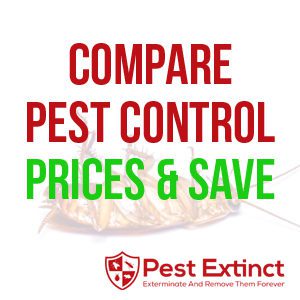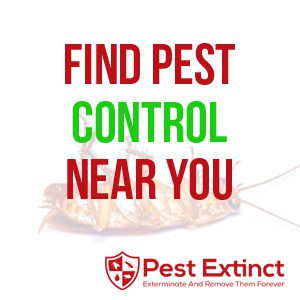
Prepping for Pests: Seasonal Defense Strategies for Every Homeowner
No one likes unwanted guests, especially when those guests are pests. Just as you adjust your home for the changing seasons — winterizing pipes, checking HVAC systems, or cleaning gutters — it’s essential to think about how seasonal changes impact the likelihood of pest infestations. In this blog, we’ll take a deep dive into the pests that dominate each season and the strategies homeowners can use to keep them at bay.
Spring: Blossoms, Blooms, and Bugs
With the rebirth of plants and warmer weather, spring is a crucial time for pest activity.
- Common Pests: Ants, termites, mosquitoes, and wasps.
- Prevention Tips:
- Ensure water drainage systems work properly to avoid standing water, a mosquito breeding ground.
- Seal windows and doors properly.
- Inspect wooden structures for signs of termite damage.
- Clear out old wasp nests.
Summer: The Heat Brings the Horde
Summer’s heat often sends pests in search of cooler, more hospitable environments—like your home.
- Common Pests: Flies, mosquitoes, cockroaches, and spiders.
- Prevention Tips:
- Keep food sealed and avoid leaving ripe fruit out in the open.
- Regularly take out the trash and ensure bins are sealed.
- Install screens on windows and doors for ventilation without pests.
Autumn: Fall into Prevention
As the temperatures drop, pests look for warmer places to hide out, often inside homes.
- Common Pests: Rodents, spiders, and cockroaches.
- Prevention Tips:
- Clear leaves and other debris from gutters to prevent moisture buildup.
- Seal gaps in the home’s exterior, including areas where utilities enter.
- Store firewood away from the home’s exterior to deter pests.




Winter: Cold Weather Invaders
Cold weather forces many pests to seek shelter. While some pests die off in winter, others take refuge in warm homes.
- Common Pests: Mice, rats, and raccoons.
- Prevention Tips:
- Ensure all food is stored securely, especially during the holiday season.
- Regularly check basements, attics, and crawl spaces for signs of rodent activity.
- Keep trash cans sealed and away from the home.
Year-Round Strategies for Success
While each season brings unique challenges, some strategies are universally effective:
- Regular Inspection: Check the exterior of your home for any cracks, holes, or other entry points regularly.
- Maintain Cleanliness: Pests are attracted to food. Regularly cleaning crumbs and spills can prevent infestations.
- Seek Professional Help: If you’re unsure about a potential infestation, it’s always best to consult with a pest control professional. They can provide guidance tailored to your specific situation.
Being proactive in your pest control approach, adjusting your strategy with the changing seasons, and understanding the threats each season poses are crucial for a pest-free home. Remember, it’s easier to prevent an infestation than to get rid of one. With the right knowledge and preparation, every homeowner can keep their home pest-free all year round.




Top Pests and Warning Signs to Watch Out For
While knowing prevention strategies is essential, being aware of the most common pests and recognizing the early signs of their presence is equally important. Here’s a guide to help you identify and take action against these unwelcome guests before they become a significant issue.
1. Termites
- Warning Signs:
- Mud tubes on exterior walls.
- Hollow sounding timber when tapped.
- Discarded wings from termite swarmers.
- Visible damage to wooden structures.
- Quick Tip: Termites can cause significant structural damage if not treated early. Regular inspections, especially in spring, are crucial.
2. Bedbugs
- Warning Signs:
- Red, itchy welts on your skin.
- Tiny black or rust-colored spots on bedding.
- Visible tiny bugs in the seams of mattresses and furniture.
- Quick Tip: While not carriers of diseases, bedbug bites can be very itchy and irritating. Ensure you wash and heat-treat your bedding regularly.
3. Cockroaches
- Warning Signs:
- Droppings that resemble ground coffee.
- Musty odor especially in dark and damp places.
- Live or dead roaches in kitchens and bathrooms.
- Quick Tip: Cockroaches can be carriers of various diseases. Keeping your home clean, especially food areas, can discourage their presence.
4. Mice & Rats
- Warning Signs:
- Gnawed holes in food packaging.
- Droppings, especially near food sources.
- Scratching noises, particularly during the night.
- Quick Tip: Rodents can reproduce rapidly; hence swift action is required. Sealing potential entry points and keeping food sources secure are primary preventive measures.
5. Ants
- Warning Signs:
- Visible trails, especially in the kitchen and bathroom.
- Nest-like mounds of dirt in gardens or near home foundations.
- Presence of winged ants inside the house.
- Quick Tip: Different ant species have varied habits and preferences. Identify the ant type to tackle them effectively.




6. Wasps & Bees
- Warning Signs:
- Regular sighting of these insects flying around a particular area.
- Visible nests, often in eaves, attics, or trees.
- Increased activity during late summer.
- Quick Tip: While bees are crucial for pollination, wasps can be aggressive. If you suspect a nest, it’s best to consult professionals rather than handling it yourself.
7. Fleas
- Warning Signs:
- Pets scratching more than usual.
- Tiny dark specks on pet bedding or your own.
- Flea bites, which are itchy and often in clusters.
- Quick Tip: Regular pet treatments and frequent vacuuming can curb flea infestations.
Pests are a persistent problem, but knowledge is the key to prevention. By staying alert to the warning signs, homeowners can catch potential infestations early, saving both time and money. Remember, a clean home and regular inspections are your best line of defense against these pesky invaders.
Seasonal Pest Prevention: Services Every Homeowner Should Consider
Spring: Time for a Full Assessment
As the warmth returns, so does the activity of many pests. In the spring, the focus should be on early detection and prevention. It’s essential to consider termite inspections since this is the prime mating time for them. Don’t forget to create ant barriers; as ants become more active, a chemical barrier can prevent their entry into your home. And as animals awaken from their winter hibernation, rodent proofing becomes vital. Look for and seal any holes, gaps, and cracks that could let them in.
Summer: Active Pest Control
Summer brings the height of pest activity. Mosquito control becomes paramount — through water treatments and sprays, homeowners can reduce the mosquito population in their yards. Bee and wasp nest removal is another summer essential. These insects are most active during these warm months, so if you spot a nest, professional removal is the safest route. Lastly, if you have pets, flea and tick treatments become necessary for both your animals and living spaces.
Fall: Prepare for Overwintering Pests
As the temperatures begin to dip, pests look for warmer shelters. To keep them out of your home, consider setting up rodent bait stations to deter mice and rats from moving in during the colder months. Bedbug inspections also become crucial, ensuring that as families transition to spending more time indoors, they remain bedbug-free. One of the most effective fall strategies is to seal entry points. Any gaps, cracks, or holes in a home’s exterior could be an open invitation for pests.




Winter: Maintenance and Monitoring
While winter might seem like a quiet time for pests, they could still be around, hidden from sight. Indoor pest monitoring through sticky traps and other devices can catch those that managed to slip inside. Outside, treatments for trees and shrubs can prevent pests like moths or beetles, which might overwinter in plants, from causing havoc come spring. And in the pantry, prevention continues to be essential. Using sealed containers and routinely checking for infestations ensures stored food remains safe.
Through each season’s unique challenges, homeowners have the tools and knowledge to fend off unwanted pests. Regular checks, preventive measures, and timely action will maintain a comfortable and pest-free home throughout the year.
The Cost of Seasonal Pest Control: Prevention vs. Treatment
While prevention is always better (and often cheaper) than cure, it’s essential for homeowners to understand the potential costs of pest control, both for prevention and treatment. Setting aside a budget for seasonal pest control can prevent larger expenses down the road, ensuring a comfortable, pest-free living environment all year round.
Costs of Preventative Services
1. Spring Assessments and Prevention: Spring is a crucial time for early detection. A general pest control assessment may range between $100 and $250, depending on the size of the property and its location. Termite inspections are slightly pricier, typically running between $75 to $150, but can save homeowners thousands if a potential infestation is caught early. Ant barrier treatments can cost between $125 and $400, depending on the product used and the area to be covered.
2. Summer Active Control: Mosquito treatments, often necessary multiple times during the season, may cost homeowners between $70 to $100 per application. Bee and wasp nest removal varies depending on the nest’s size and location, but one can expect to pay between $95 to $145 per nest. If you have pets, flea and tick treatments can range from $50 to $200, depending on the type of treatment and size of the area.
3. Fall Preparations: Setting up rodent bait stations might cost between $50 to $300, depending on the extent of the problem and the product used. Bedbug inspections, often crucial during this transition period, may run from $100 to $500, while sealing entry points can range from $300 to $1,000, depending on the size of the home and the number of vulnerable spots.
4. Winter Maintenance: Indoor monitoring devices like sticky traps are relatively inexpensive, costing around $5 to $20 for a set. Treatments for trees and shrubs can range from $50 to $500, depending on the size and type of plants. Pantry pest prevention, on the other hand, is often a matter of purchasing sealed containers, which can range from $10 to $100 for a set, depending on material and quality.




Costs for Treating Serious Infestations
In the unfortunate event that prevention methods do not deter pests, treatment becomes essential. The cost of treating an infestation largely depends on the type of pest and the severity of the issue.
- Termite Treatments: A major termite infestation can be a homeowner’s nightmare. Treating these pests can range from $500 for minor problems to $5,000 or more for significant infestations.
- Rodent Extermination: Getting rid of rodents can cost between $200 to $600, depending on the extent of the problem.
- Bedbug Treatments: These can be particularly expensive, often ranging from $1,000 to $2,500, depending on the size of the area and method used.
- Cockroach Extermination: If roaches have taken over, homeowners might have to shell out between $300 and $800 for professional extermination.
- Ant Infestations: Treating an ant colony that has settled in your home can cost between $150 to $1,000, depending on the type of ant and size of the infestation.
The Importance of Hiring Certified Pest Control Professionals
In our quest for a pest-free home, it might be tempting to opt for DIY solutions, especially with a plethora of pest control products available in stores. However, it’s crucial to understand why investing in certified pest control professionals can be a game-changer for homeowners.
Expertise and Experience
Certified professionals undergo rigorous training and regularly update their knowledge on the latest pest control techniques. This ensures they can handle a wide variety of pests more effectively than a layperson. Moreover, professionals can often identify pests that may not be visible to the untrained eye, ensuring that potential infestations are addressed before they become major problems.
Customized Plans
Every home is unique, with its own set of vulnerabilities. Professional pest controllers can craft a plan tailored to your home’s specific needs. They consider factors such as the size of your home, the level of infestation, and long-term prevention solutions.
Use of Advanced Equipment
While store-bought solutions can sometimes provide short-term relief, professionals are armed with advanced equipment and products not available to the general public. This ensures that the treatment is more effective and long-lasting.




Safety
Many pest control products can be harmful if not used correctly. Professionals are trained to use these products in a way that is safe for both the environment and the occupants of the house. They know where to apply treatments and how to protect water sources, pets, and children.
Time and Flexibility
Pest control is not a one-time event. Many treatments need to be applied at particular times to be effective. Professional services can monitor and provide treatments as needed, working around your schedule. This ensures that you don’t have to take time off work or change your daily routine.
Addressing pest issues is more than just reacting to infestations. It’s about setting up a safe, healthy living space that remains protected throughout the year. While there’s a cost associated with hiring professionals, the peace of mind, effectiveness, and potential savings from preventing large-scale infestations make it a worthwhile investment. As seasons change and new pests emerge, having a professional on your side ensures your home remains a comfortable sanctuary.
Top 10 Pest Control Services in 2023
The pest control industry has evolved over the years, with many companies striving to offer the best services possible. In 2023, homeowners have a variety of top-tier options to choose from. Here’s a breakdown of the top 10 pest control services this year and what makes them stand out.
- PestGuard Elite: Known for their innovative techniques, PestGuard Elite emphasizes eco-friendly solutions that minimize environmental impact while ensuring maximum effectiveness against pests.
- InsectAway: Catering to both residential and commercial properties, InsectAway boasts a comprehensive range of services, from termite control to bed bug solutions. They also offer 24/7 customer service, ensuring prompt responses to emergencies.
- GreenShield Pest Solutions: As the name suggests, GreenShield is dedicated to using environmentally-friendly methods. Their integrated pest management approach prioritizes preventative measures and educates clients on maintaining a pest-free environment.
- VerminVanguard: Renowned for their rapid response times, VerminVanguard guarantees service within 24 hours of a call. Their team of certified experts is skilled in handling a broad spectrum of pests.
- BioProtect Services: Focusing on biologically-based treatments, BioProtect employs natural predators and organic compounds to combat pest infestations, reducing the need for chemical interventions.
- SafeHome Pest Control: Prioritizing customer safety, SafeHome ensures that their treatments are child and pet-friendly. They also offer a satisfaction guarantee, providing free follow-ups if pests return within a specified time.
- EcoPest Solutions: EcoPest has garnered a reputation for their dedication to sustainable practices. Their methods not only combat pests but also help reduce the carbon footprint of their operations.
- HomeGuard Pest Defense: HomeGuard provides an all-around home protection plan, addressing not only common pests but also offering solutions for rodents and wildlife that may intrude upon residential spaces.
- PestPro Experts: Specializing in advanced technology, PestPro uses state-of-the-art equipment and digital monitoring systems to detect and address pest issues before they escalate.
- Nature’s Way Pest Solutions: Emphasizing the balance between effective pest control and environmental conservation, Nature’s Way employs techniques that aim to restore the natural equilibrium, ensuring that beneficial insects are preserved.




Selecting the right pest control service for your needs requires careful consideration. With so many exceptional companies in the market, it’s essential to weigh factors like the company’s approach, customer reviews, cost, and the range of services offered. Regardless of your choice, remember that consistent, preventive measures remain key to maintaining a pest-free home year-round.
The Importance of Continuous Pest Education and Awareness
While homeowners tend to prioritize pest control during transitional seasons, the reality is that pests don’t limit their activities to specific months. In fact, many pests can adapt to varying conditions, finding ways to survive and thrive in both extreme cold and heat. This adaptability underscores the importance of year-round vigilance and the value of continuous pest education and awareness.
Pest Behavior and Adaptability
The behavior of pests is influenced by a multitude of factors including the availability of food, climate, and even the presence of natural predators. For example, while ants are a common summer nuisance, invading picnics and patios, they also prepare for winter by burrowing deeper into the earth or invading the warmth of our homes. Cockroaches, on the other hand, can thrive in various environments, from the icy cold to the sweltering heat. Their resilience can be attributed to their adaptability and rapid reproductive cycles.
Stay Updated with Seasonal Pest Guides
One of the ways homeowners can stay ahead of potential infestations is by keeping themselves informed. Many pest control services release seasonal guides and updates on pest behavior, providing insights into what to expect during different times of the year. These guides can be instrumental in preparing homeowners for potential threats and can also offer DIY tips for early prevention.
The Role of Community Awareness
Communities can play a vital role in collective pest control. When neighborhoods work together to limit factors that attract pests, such as open garbage bins or stagnant water, they reduce the risk for everyone. Attending community meetings, participating in local clean-up drives, or even setting up neighborhood watch groups for pest control can amplify efforts and create a safer environment for all residents.
Engaging in Workshops and Training Sessions
Several pest control companies also offer workshops and training sessions on pest prevention. These sessions cover a wide range of topics, from the basics of identifying different pests to more advanced techniques for addressing infestations. Engaging in such workshops can equip homeowners with the knowledge and skills to tackle minor pest issues before they escalate into more significant problems.
While hiring professional pest control services is crucial, homeowners also have a role to play in ensuring a pest-free environment. By staying informed, being proactive, and working together as a community, we can create a unified front against these unwelcome guests. After all, knowledge is the first line of defense in the battle against pests.




Integrated Pest Management (IPM): A Holistic Approach
In the modern era of pest control, a more holistic approach known as Integrated Pest Management (IPM) has gained traction. It emphasizes understanding the life cycle of pests, their interaction with the environment, and implementing preventative measures that are both effective and environmentally sensitive. IPM is not a single method but a series of evaluations, decisions, and controls.
Four Key Pillars of IPM
- Set Action Thresholds: Before taking any pest control measures, IPM first determines a threshold. This is the point at which pest populations or environmental conditions indicate that action must be taken. Spotting a single pest does not always mean control is needed, but understanding the level at which pests become a threat is crucial.
- Monitor and Identify Pests: Not all insects are harmful, so IPM emphasizes proper identification to ensure that only harmful pests are targeted. This monitoring and identification remove the potential threat of eradicating beneficial organisms.
- Prevention: As a first line of pest control, IPM programs work to manage the crop, lawn, or indoor space to prevent pests from becoming a direct threat. This can mean altering the habitat to reduce the pests’ food and water sources or removing their breeding areas.
- Control: Once monitoring, identification, and action thresholds indicate that pest control is required, and preventive methods are no longer effective or available, IPM programs then evaluate the proper control method. They often opt for targeted, less risky methods before considering broader control methods like pesticides.




Why IPM Matters for Homeowners
While IPM originated in the sphere of agriculture, its principles are universally applicable, including in residential settings. For homeowners, IPM can mean:
- Less Reliance on Chemicals: By focusing on preventative measures and targeted controls, homeowners can significantly reduce the need for chemical solutions.
- Cost-Efficiency: Over time, an IPM approach can be more cost-effective. While there might be an initial investment in setting up preventive measures, the long-term costs of repeated chemical treatments can be much higher.
- Environmental Protection: IPM is environmentally conscious. It seeks to reduce the environmental impact of pest control by using sustainable methods and avoiding chemicals that can be harmful to the surrounding ecosystem.
- Safety: Reducing the reliance on chemicals not only benefits the environment but also ensures the safety of the home’s occupants, including pets.
Incorporating IPM into your home’s pest management strategy can be a game-changer. By emphasizing prevention and targeting only problematic pests, homeowners can maintain a balance that keeps their home safe, reduces costs, and is environmentally conscious.

Leave a Reply